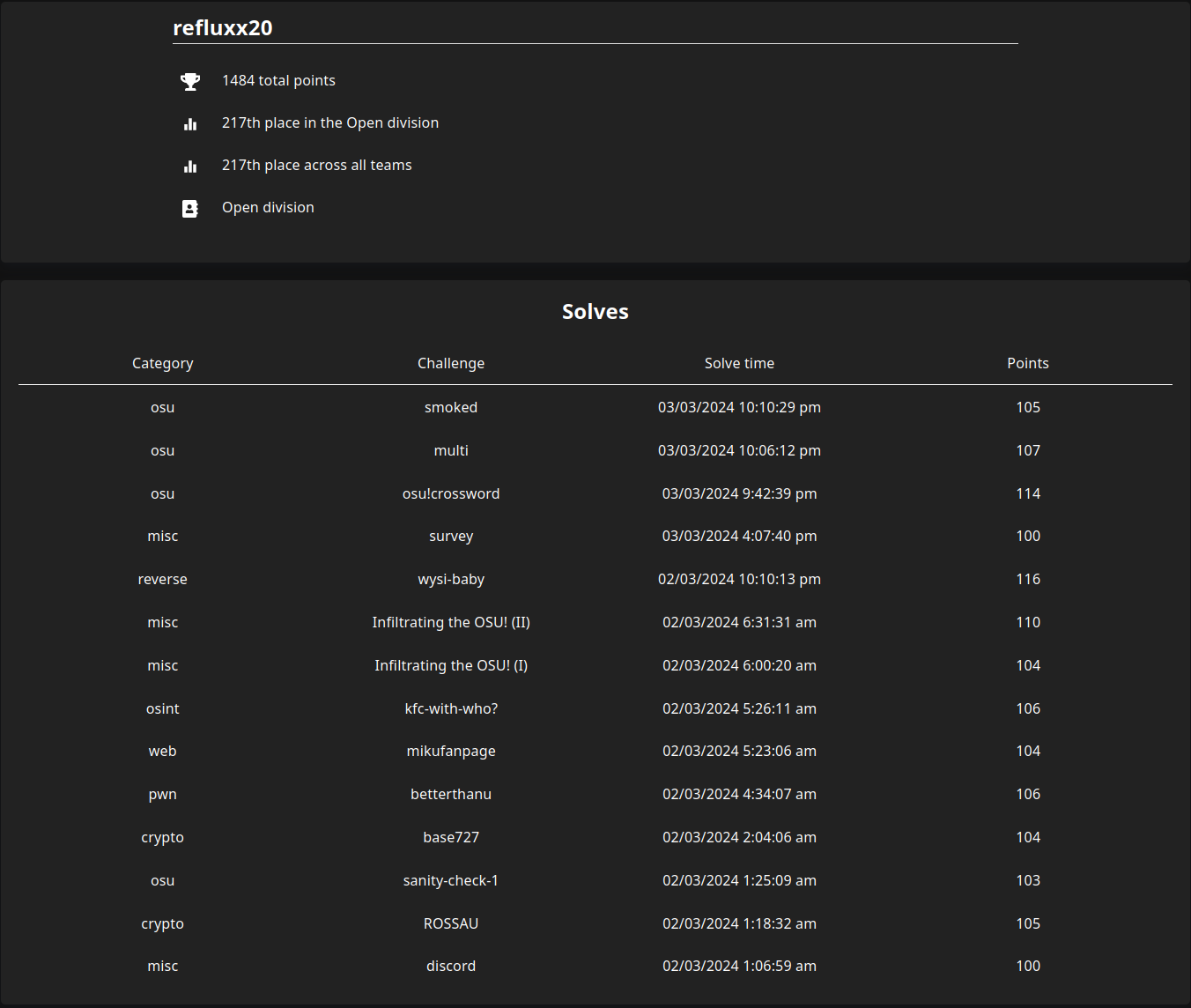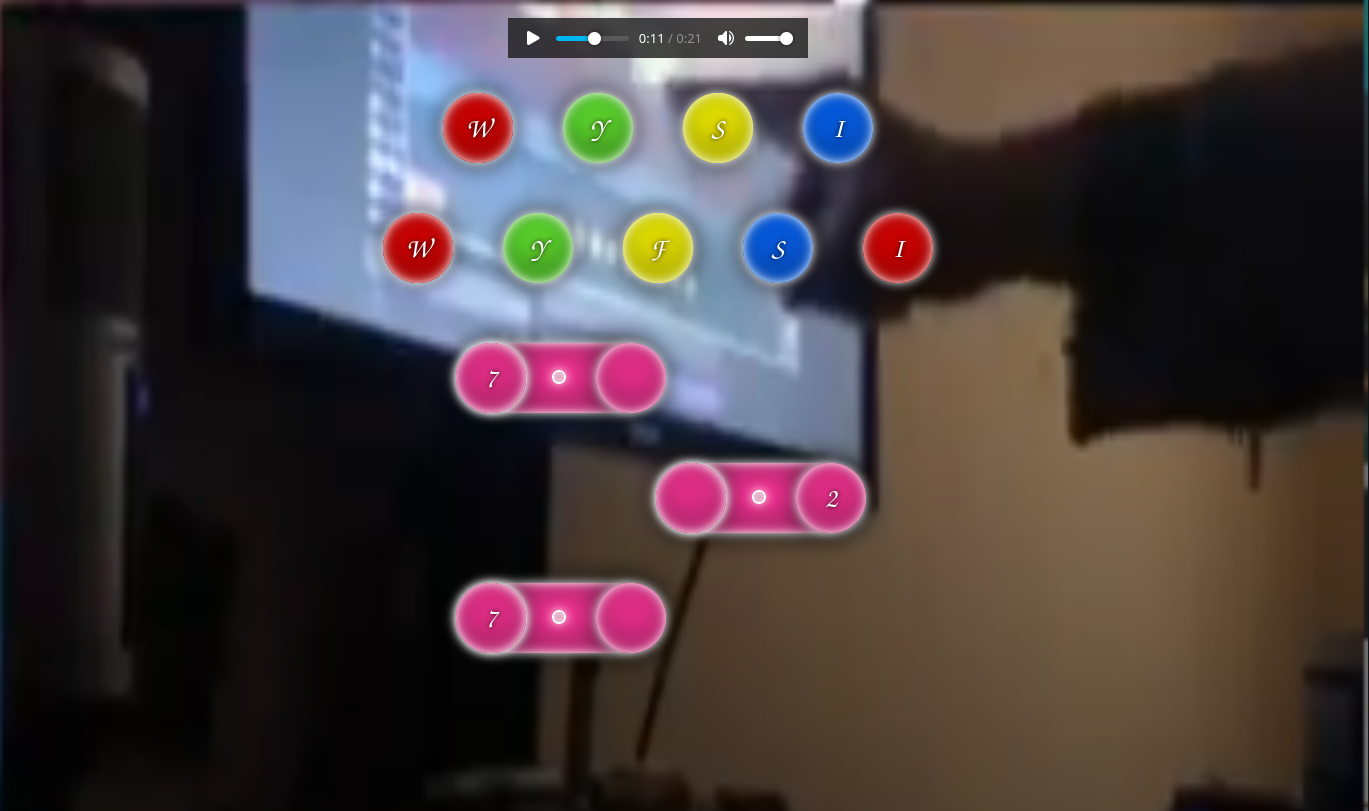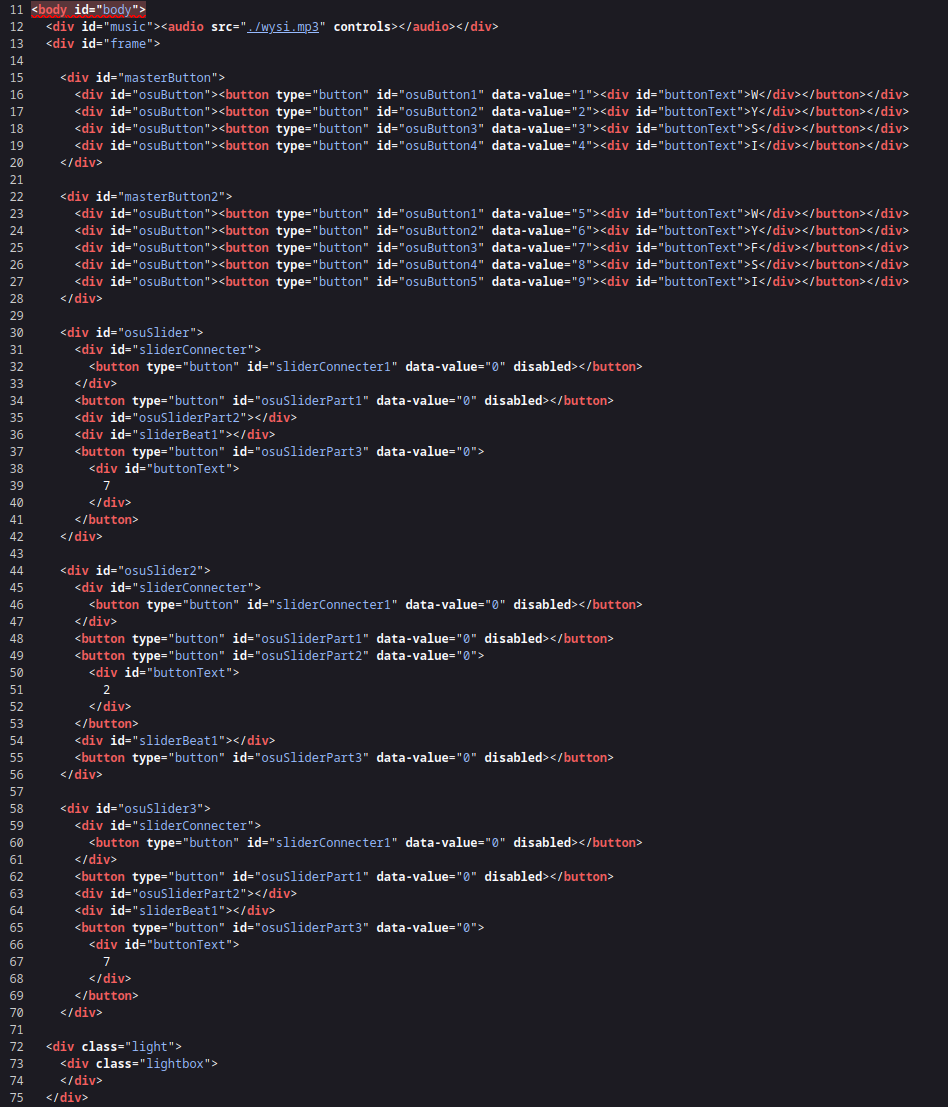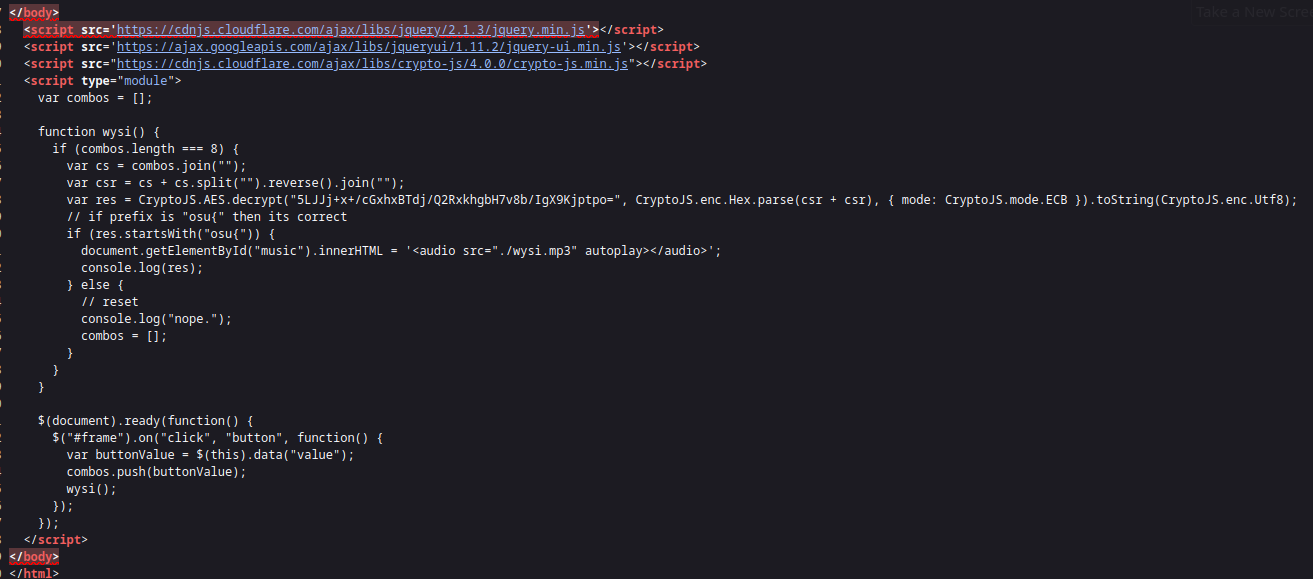osu!gaming CTF 2024 - wysi-baby
Hello!
A few months back, I took part in the inaugural osu!gaming CTF 2024.
As I wasn’t able to find anyone else to play with, this ended up as a solo attempt.
As a CTF newbie, I definitely learnt a lot from this competition, though I also have to say that I’m a little upset at my own performance.
This was because most of the challenges I solved were relatively trivial, with the exception of this challenge.
If you’re interested, these were the challenges I solved during the competition period:

If time permits, I’d certainly like to give the unattempted challenges a try too. If I do solve them, I’ll post my writeups for those challenges here as well.
Without further ado, let’s dive into the writeup for this challenge!
Writeup
https://web-osu-wysi.surge.sh/
For non-osu! players: Aireu 727 WYSI on YouTube
Author: sahuang
If we click on the link provided, we are greeted with a very ugly looking webpage:

If we try to inspect the page’s source, we see the following:

It thus seems that each button has a specific value. For example, the WYSI row of buttons map to the values 1-4 respectively.
Scrolling down, we see a piece of interesting JavaScript code:

Copying the code here for better readability:
var combos = [];
function wysi() {
if (combos.length === 8) {
var cs = combos.join("");
var csr = cs + cs.split("").reverse().join("");
var res = CryptoJS.AES.decrypt("5LJJj+x+/cGxhxBTdj/Q2RxkhgbH7v8b/IgX9Kjptpo=", CryptoJS.enc.Hex.parse(csr + csr), { mode: CryptoJS.mode.ECB }).toString(CryptoJS.enc.Utf8);
// if prefix is "osu{" then its correct
if (res.startsWith("osu{")) {
document.getElementById("music").innerHTML = '<audio src="./wysi.mp3" autoplay></audio>';
console.log(res);
} else {
// reset
console.log("nope.");
combos = [];
}
}
}
In essence, each combination of button clicks will get loaded into the combos array, as an array of integer values. This array is then processed by the wysi() function.
Firstly, it checks that the combo length is 8. We thus know that we need to click a combination of exactly 8 buttons for this function to work.
Next, this combination formatted into a palindromic sequence. For example, if our input sequence is [1,2,3,4,5,6,7,8], the combination is formatted into 1234567887654321. We wish to note that this is a 16-byte sequence.
Then, this 16-byte block is decrypted via AES in ECB mode, and converted to a plaintext in UTF-8 encoding. Evidently, if this plaintext is the flag, the win condition of the function is triggered, where it plays an .mp3 file.
To solve this, we can conduct an exhaustive search.
Taking into consideration the size of the input, we have $10^8$ possible input permutations. This yields a complexity of approximately $2^{27}$, and thus, it is highly feasible to simply do an exhaustive search here.
Hence, we can modify this piece of JS code and use it to run an exhaustive search.
// import CryptoJS from 'crypto-js'
const CryptoJS = require('crypto-js');
for (let i = 00000000; i <= 99999999; i++) {
var cs = "" + i;
try {
var csr = cs + cs.split("").reverse().join("");
var res = CryptoJS.AES.decrypt("5LJJj+x+/cGxhxBTdj/Q2RxkhgbH7v8b/IgX9Kjptpo=", CryptoJS.enc.Hex.parse(csr + csr), { mode: CryptoJS.mode.ECB }).toString(CryptoJS.enc.Utf8);
// if prefix is "osu{" then its correct
if (res.startsWith("osu{")) {
console.log(cs);
console.log(res);
break;
}
} catch(err) {
}
}
This will take a while to run. But eventually, we will get our required input value, as well as the flag.
$ node solve.js
72709913
osu{baby_js_osu_web_uwu}